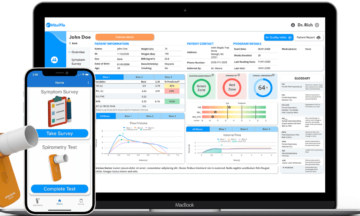
Recent Posts


ASSIST Medical Advisor Peden Named Inaugural Editor-in-Chief of New AAAAI journal
David Peden, MD, past president of the American Academy of Allergy, Asthma & Immunology, will serve as the academy’s first editor-in-chief of The Journal of Allergy and Clinical Immunology: Global.
ECU Brody School of Medicine and ASSIST Center Partner on Healthcare Access Initiative
The Brody School of Medicine at East Carolina University is proud to be a research partner of the ASSIST Center at N.C. State University. Brody’s...
Biochemical Sensor Researcher Makes Tech Review’s List of Top Young Innovators
Amay J. Bandodkar, an assistant professor of electrical and computer engineering at North Carolina State University, has been named one of MIT Technology Review’s “Innovators Under 35” for his work on developing wearable biochemical sensors.
Inkjet Printing Shows Promise As New Strategy For Making E-Textiles, Study Finds
In a new study, North Carolina State University researchers demonstrated they could print layers of electrically conductive ink on polyester fabric to make an e-textile that could be used in the design of future wearable devices.
Oralkan Elected Editor-in-Chief of IEEE Journal
Ömer Oralkan, professor of electrical and computer engineering at NC State University, has been elected as the inaugural editor-in-chief of the new IEEE Open Journal of Ultrasonics, Ferroelectrics and Frequency Control (OJ-UFFC).
Study Finds Ideal Placement, Pressure for Armband that Could Track Heart Rate
North Carolina State University researchers took a step forward in the development of an armband that could track the heart’s electrical activity without requiring bulky wiring or sticky gel on the skin.
Nano-Extended Textiles research group developing next big thing in wearable tech
Imagine you are out on a run; while running, you are measuring your heartbeat to ensure there are no problems. However, instead of wearing the dead weight of a wristwatch, there is already a sensor comfortably embedded within your shirt that has it covered. Does that sound like technology of the future? Well, a research group at NC State is developing it right now.
